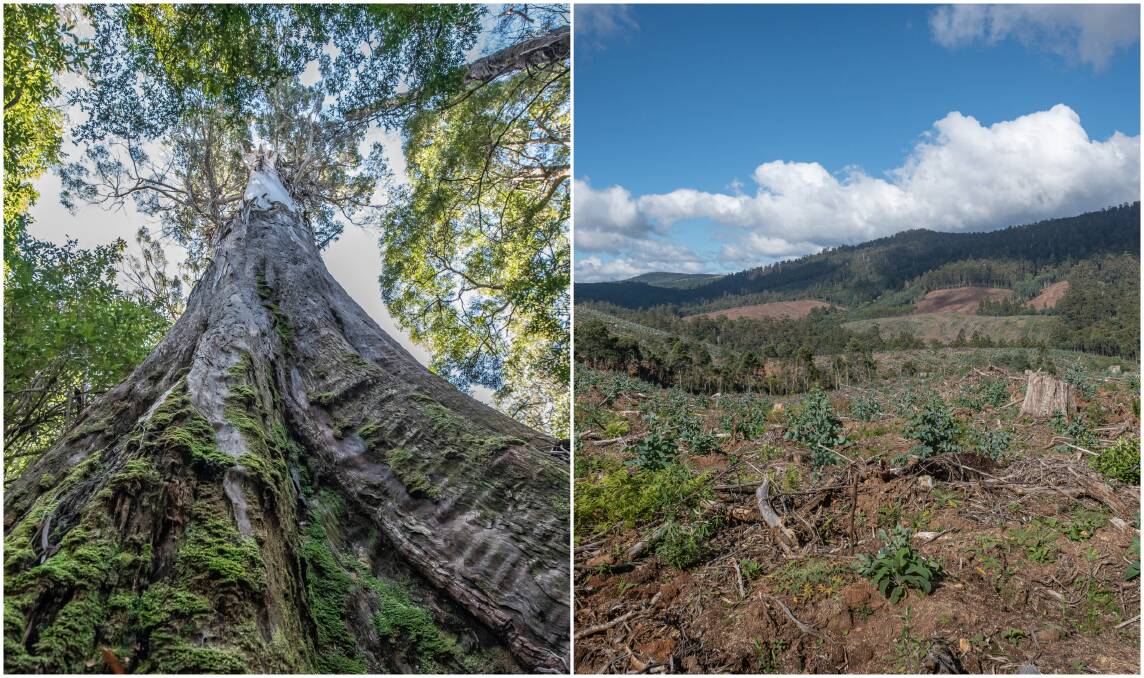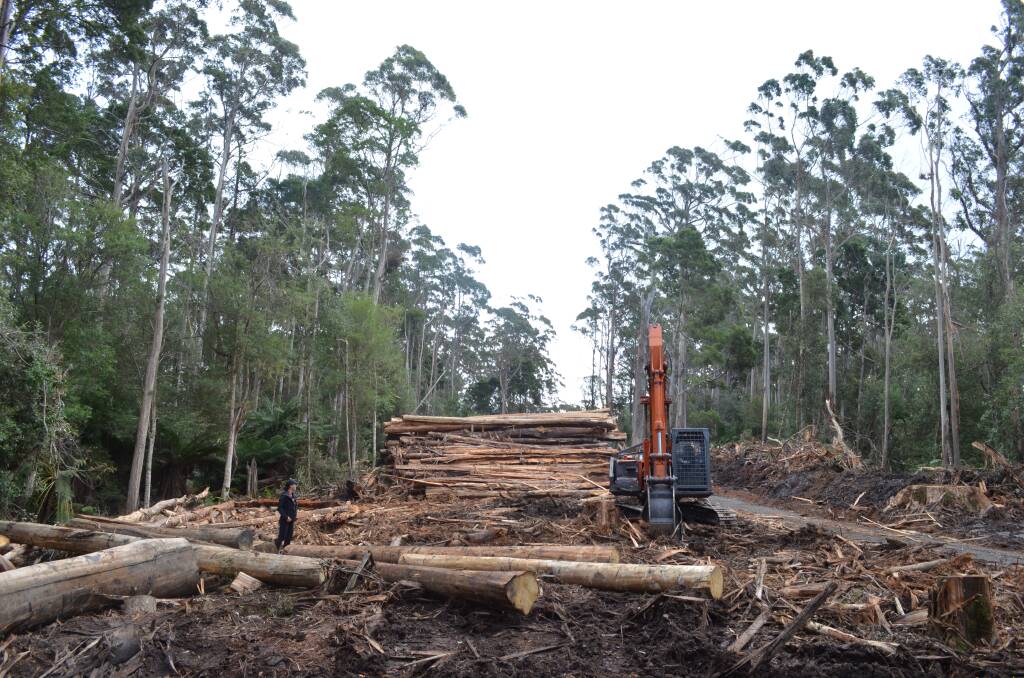
A University of Tasmania paper has found that widespread logging can increase landscape-scale fire risk in tall wet eucalyptus forest, backing up similar findings made in a retracted study from last year.
Subscribe now for unlimited access.
or signup to continue reading
Written by professor of pyrogeography and fire science David Bowman and postdoctoral research scientist James Furlaud, the study was the first of its kind to document fuels and microclimate in the wet Tasmanian forest type.
It was intended to help predict fire behaviour at various stages of forest development, using field data, modelled climate data and fire behaviour models to analyse forests recovering from various degrees of fire damage, and also clearfelling.
Older stands were found to burn at lower severity, while younger stands burn at higher severity. As rainforest ages, the species in the understorey develop less-flammable foliage and a moister microclimate, the paper found.
In their conclusion, Professor Bowman and Dr Furlaud said logging - in particular cleafelling - had broader implications for bushfire risk and severity.
"Our findings support the application of the moisture model flammability function, in which fire risk decreases with stand development, to Tasmanian tall wet eucalyptus forest," the paper reads.
"They suggest that widespread logging and wildfire can increase landscape-scale fire risk, as regenerating stands are more prone to high-severity fire than mature stands, which is consistent with the notion of a 'landscape trap', though this effect is minimised under extreme fire weather."
Such forest types are found throughout the South-West, South-East and North-East, where logging coupes are still listed in Sustainable Timber Tasmania's three-year plan. Some could be logged within months.
Debate around native forest logging and bushfire risk has become increasingly heated in recent years with conflicting studies released. Earlier this year, Professor David Lindenmayer from the Australian National University found the risk increased, using Victorian forests as an example.
But University of Melbourne forestry researchers believe other factors are more prevalent in fire risk and severity.

Last year, Dr Jennifer Sanger was subjected to a research misconduct investigation by the University of Tasmania - and ultimately cleared - following a similar paper which found unlogged forests were less flammable. It was retracted due to Tasmanian Government data being incorrectly categorised.
Dr Sanger said the study from Professor Bowman - considered one of Australia's eminent fire ecology researchers - was vindication of her position.
"This is yet another Australian study which joins several previous papers which show this link," she said.
"There has been a long public debate about this issue, despite the science clearly showing a strong link between logging and fire."
The Tasmanian Government continued to dispute the link, and cited two researchers who wrote on behalf of the Institute of Foresters Australia that closing down native forest harvesting would be a worse result.
"The government's position, that actively managing our forests can markedly reduce fuel loads, is supported by a significant number of scientific publications," a spokesperson said.
What do you think? Send us a letter to the editor:
Our journalists work hard to provide local, up-to-date news to the community. This is how you can continue to access our trusted content:
- Bookmark www.examiner.com.au
- Make sure you are signed up for our breaking and regular headlines newsletters
- Follow us on Twitter: @examineronline
- Follow us on Instagram: @examineronline
- Follow us on Google News: The Examiner















